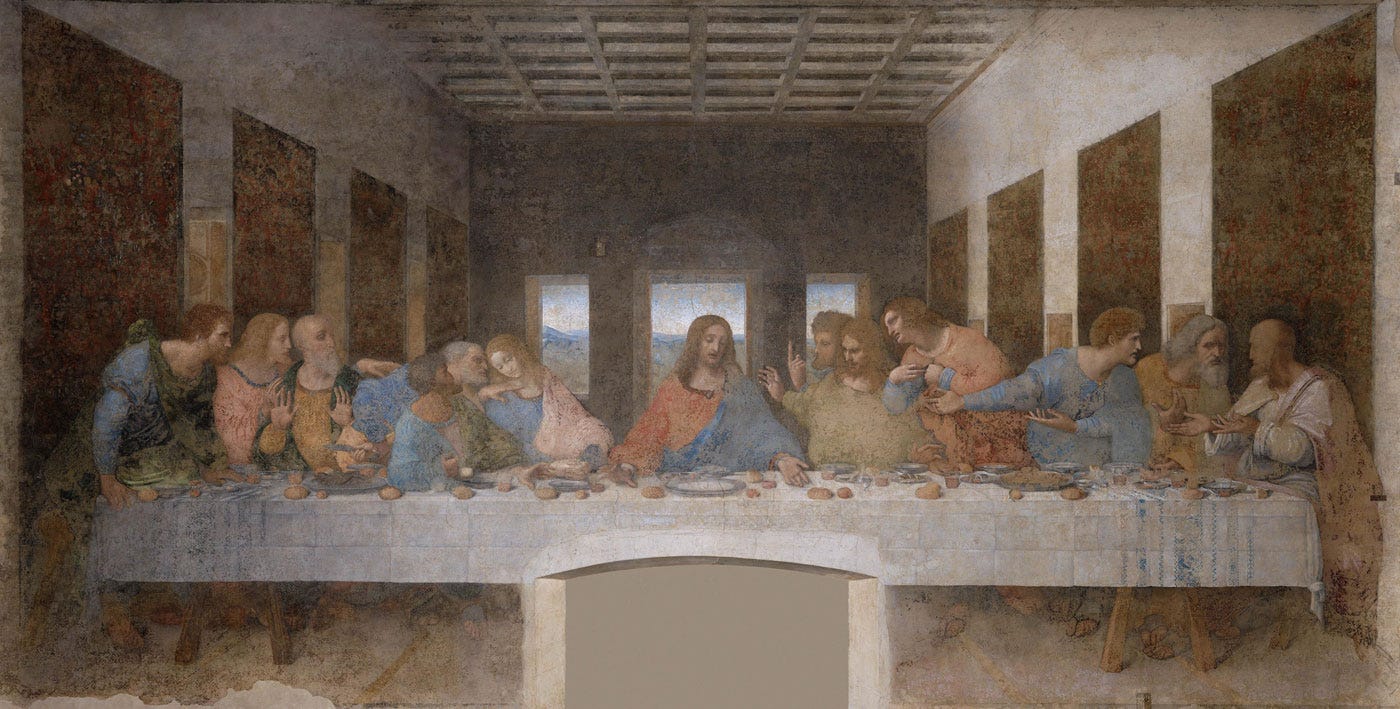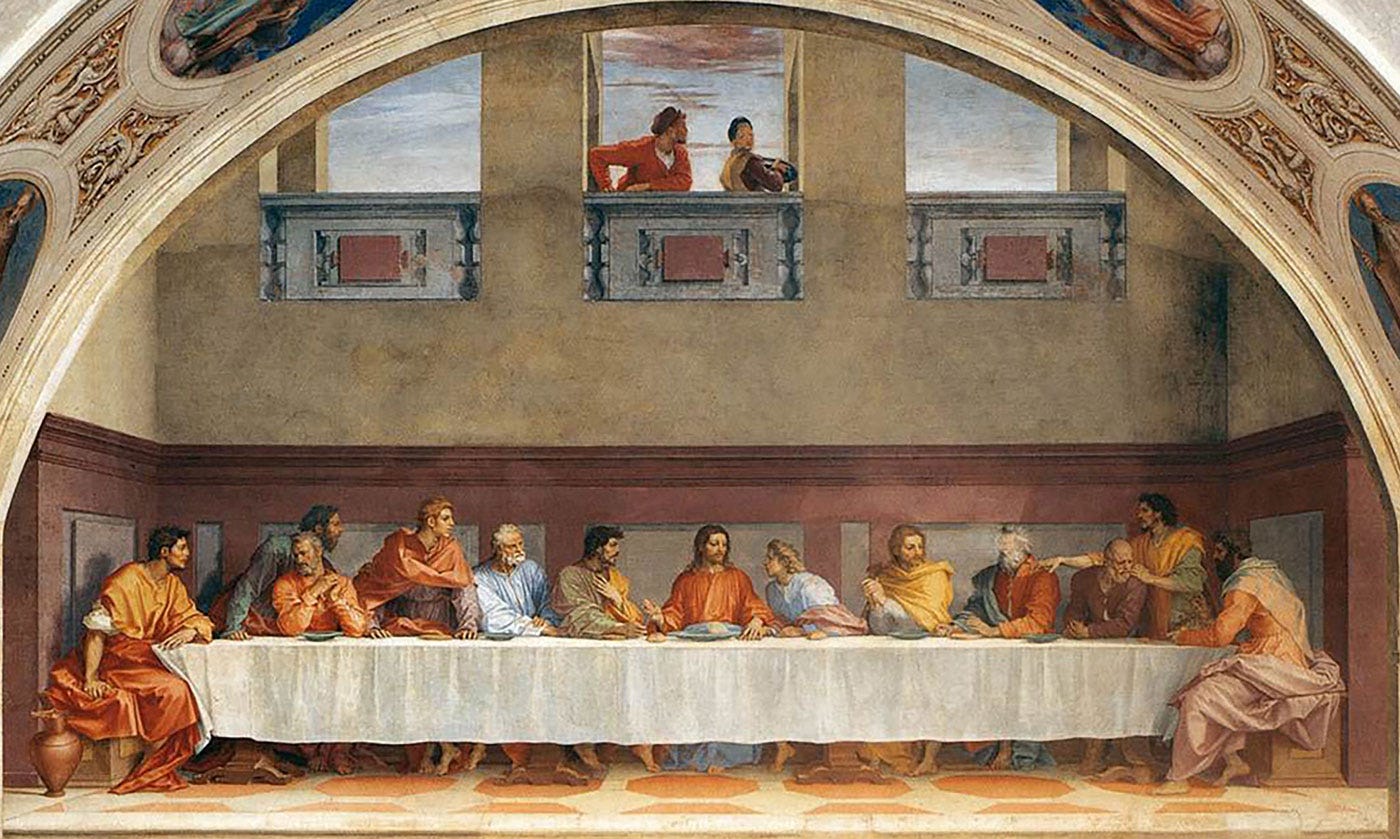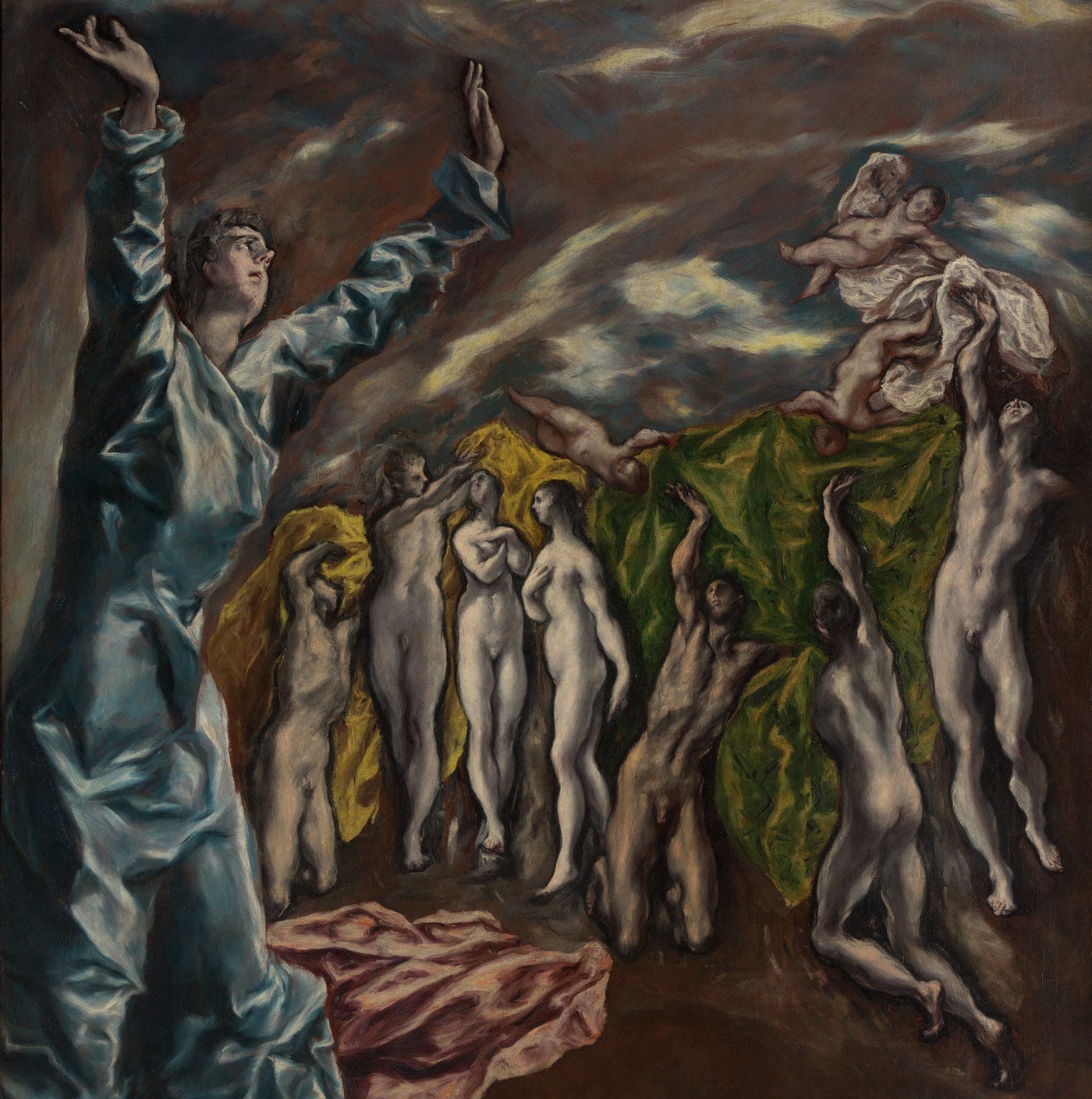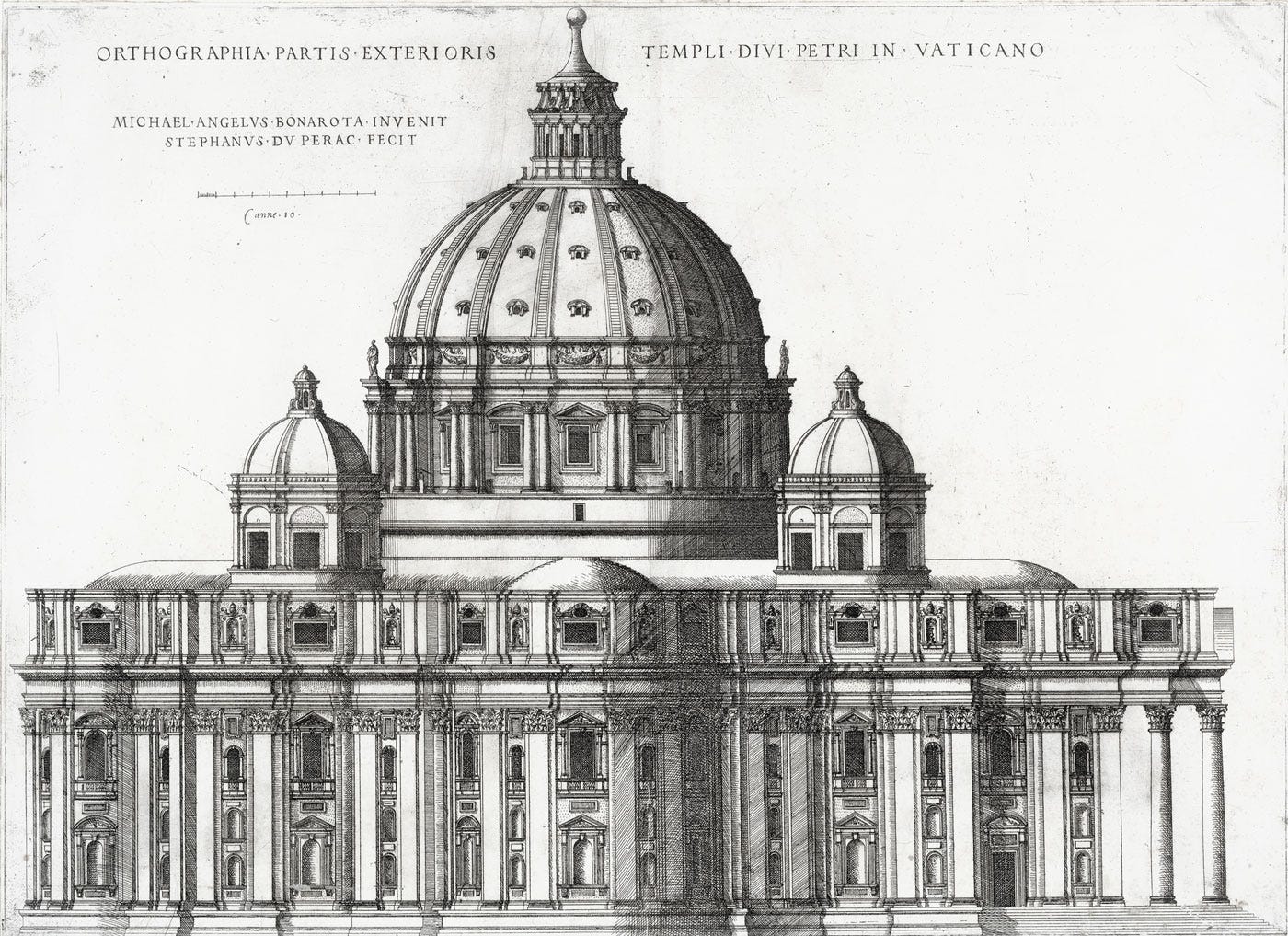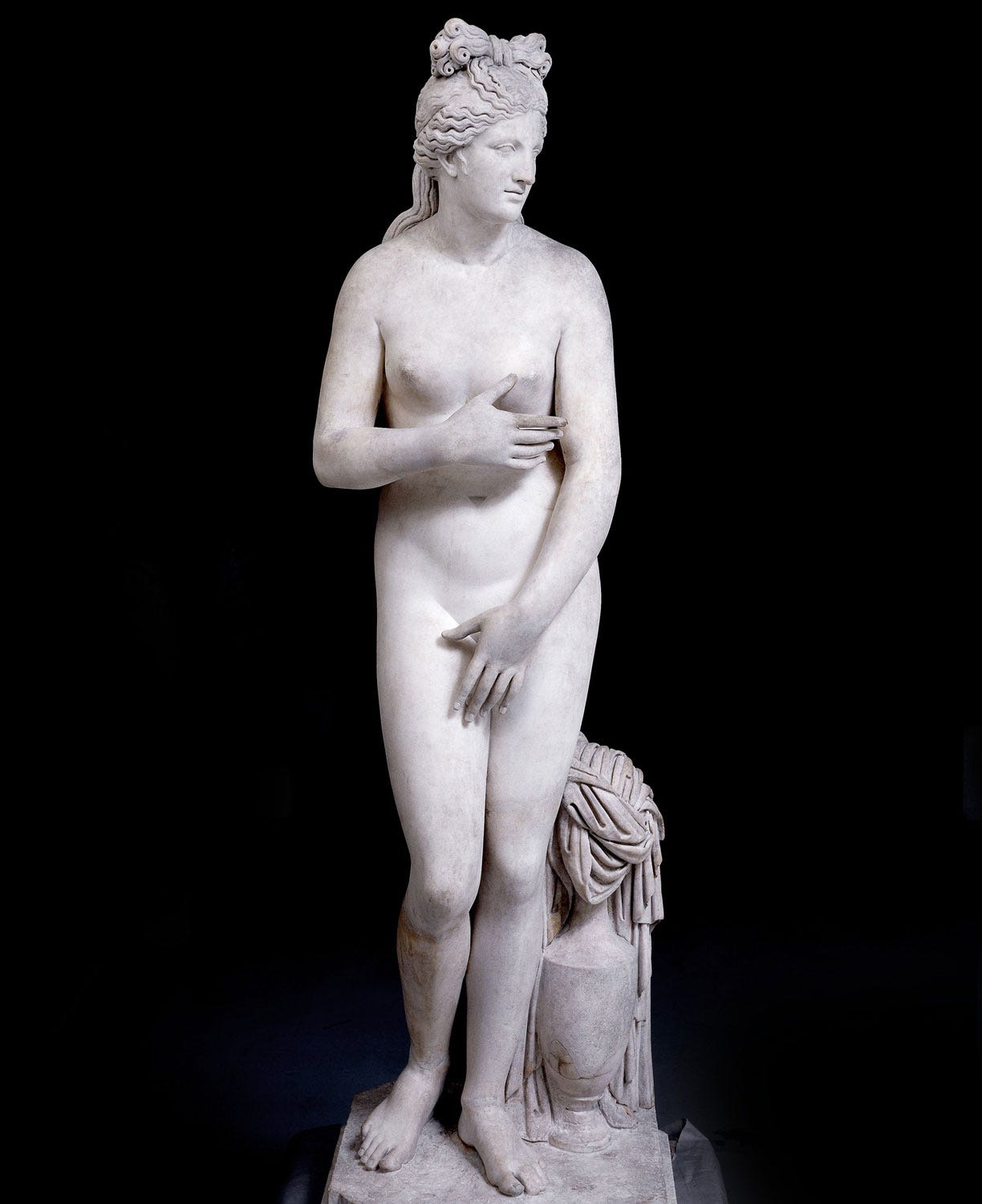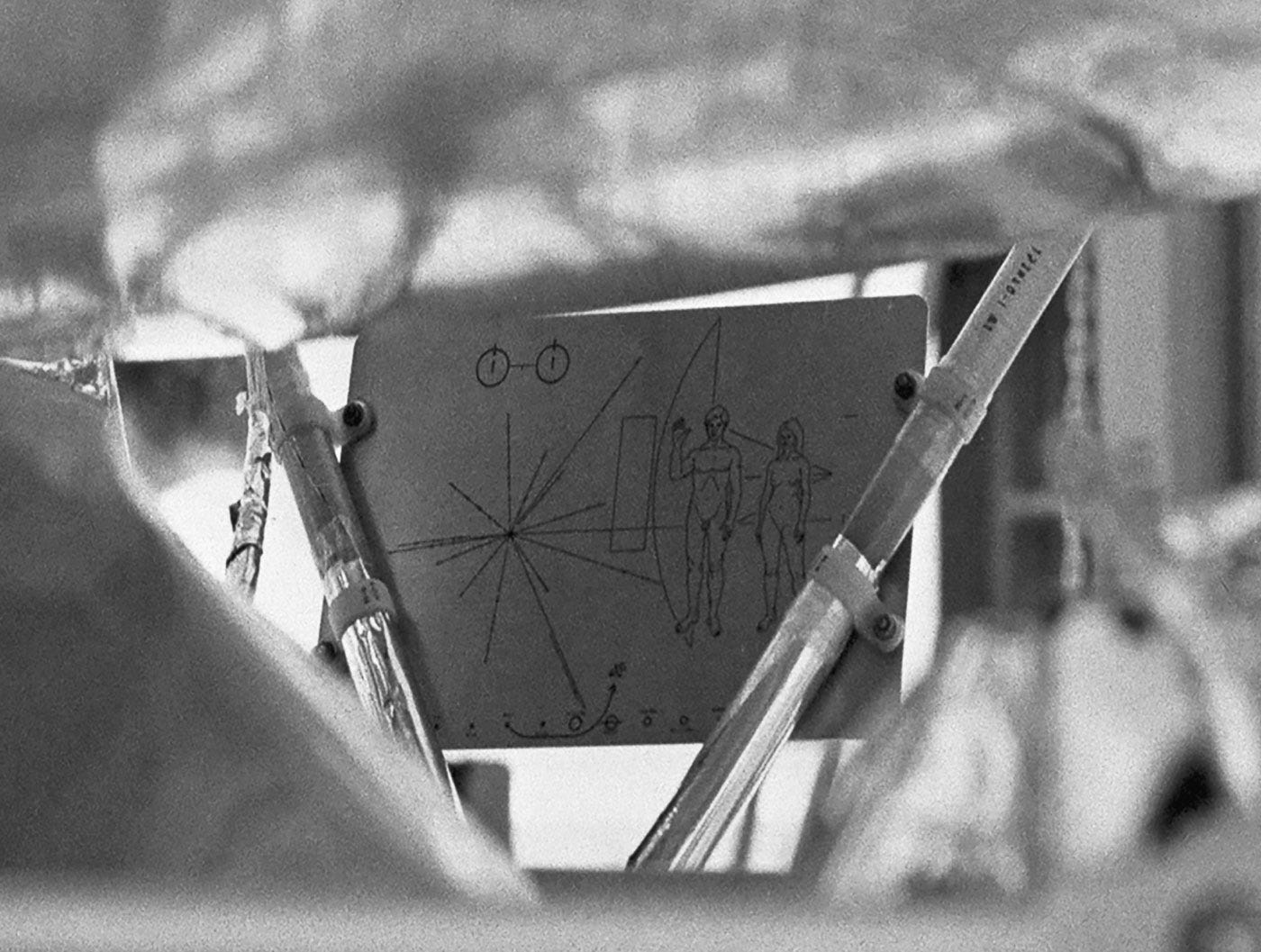The Jimi Hendrix Effect in visual arts
How artists influence each other, from ancient Greece to interstellar space.
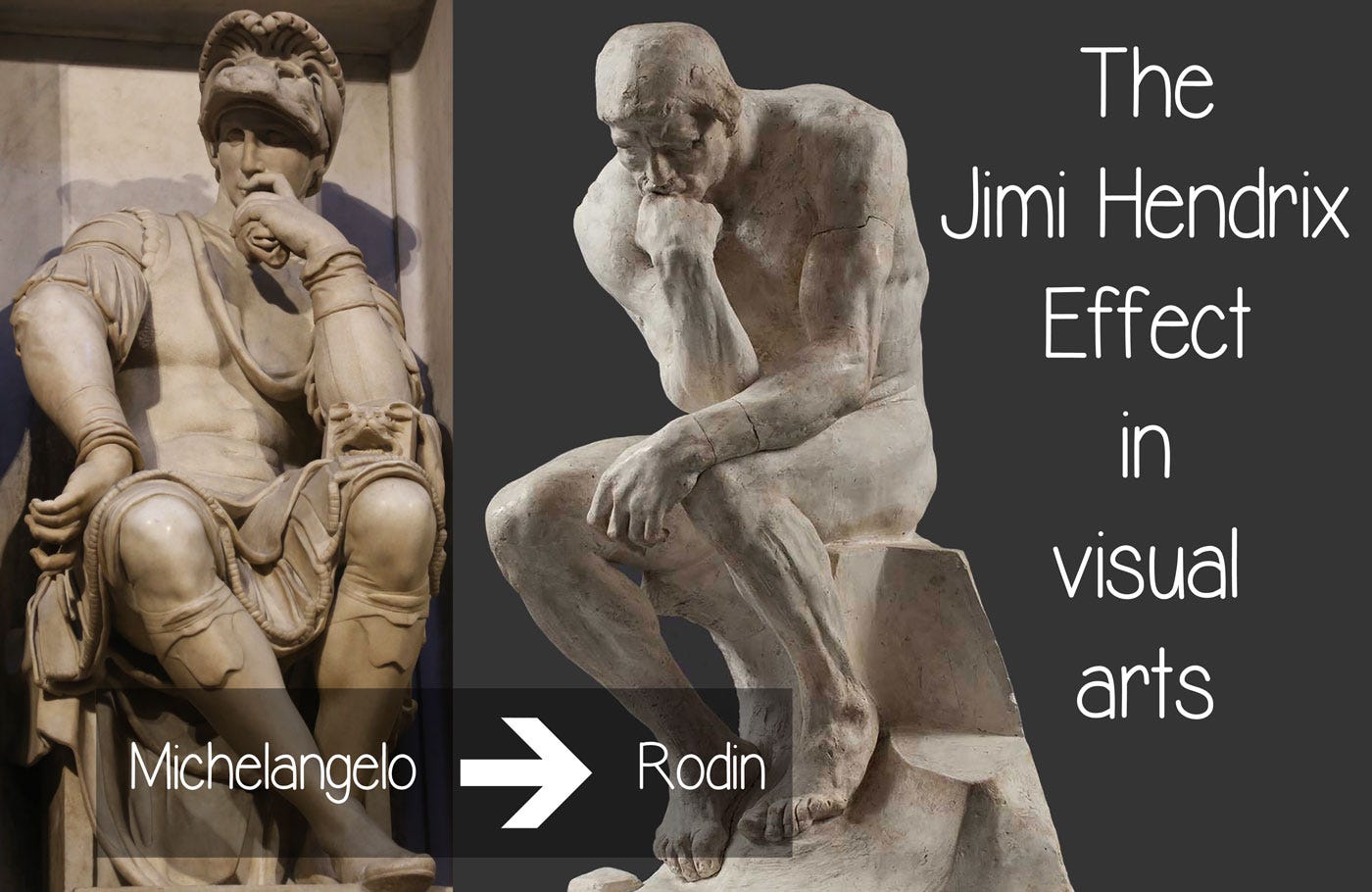
Dear reader, when listening to music, your ears notice when a tune sounds like one by another artist. This is not plagiarism but influence. Every artist learns from another, so it is an homage, and the same effect is visible in painting and sculpture.
Our journey starts in a small London Club, one evening in 1966. The Rolling Stones, Paul McCartney, and most of the great musicians of the age are in the audience. A man walks on stage:
He gets up all soft spoken and, all of a sudden, Whooor-raaawwrr! and he breaks into Wild Thing… and it was all over.
There were guitar players weeping, they had to mop the floor up. He was piling it on, solo after solo. I could see everyone’s fillings dropping out.
When he finished there was silence. Nobody knew what to do, everyone was dumbstruck, completely in shock.
Paul McCartney stated that evening that “Jimi will be a giant”. Events like these have happened many times in the past.
For example, when the Sistine Chapel ceiling was revealed:
When the chapel was uncovered, people from everywhere wanted to rush to see it, and the sight of it alone was sufficient to leave them amazed and speechless.
Minus the beer and loud music, almost, word for word, Michelangelo leaving "everyone dumbstruck, completely in shock". That is why I call it the Jimi Hendrix Effect.
Dear reader, tighten your seatbelt, as even with a small selection of works, this will be quite a ride.
Leonardo da Vinci's Last Supper
Even if you have never had the chance to see the mural in real life, you've already been told it is a masterpiece. But why? The answer is quite easy, for the effect it had on other artists:
The layout and position of the figures are very similar to those of Leonardo. Unlike many painters who outright copied the Last Supper, del Sarto acknowledges Leonardo’s influence with an homage.
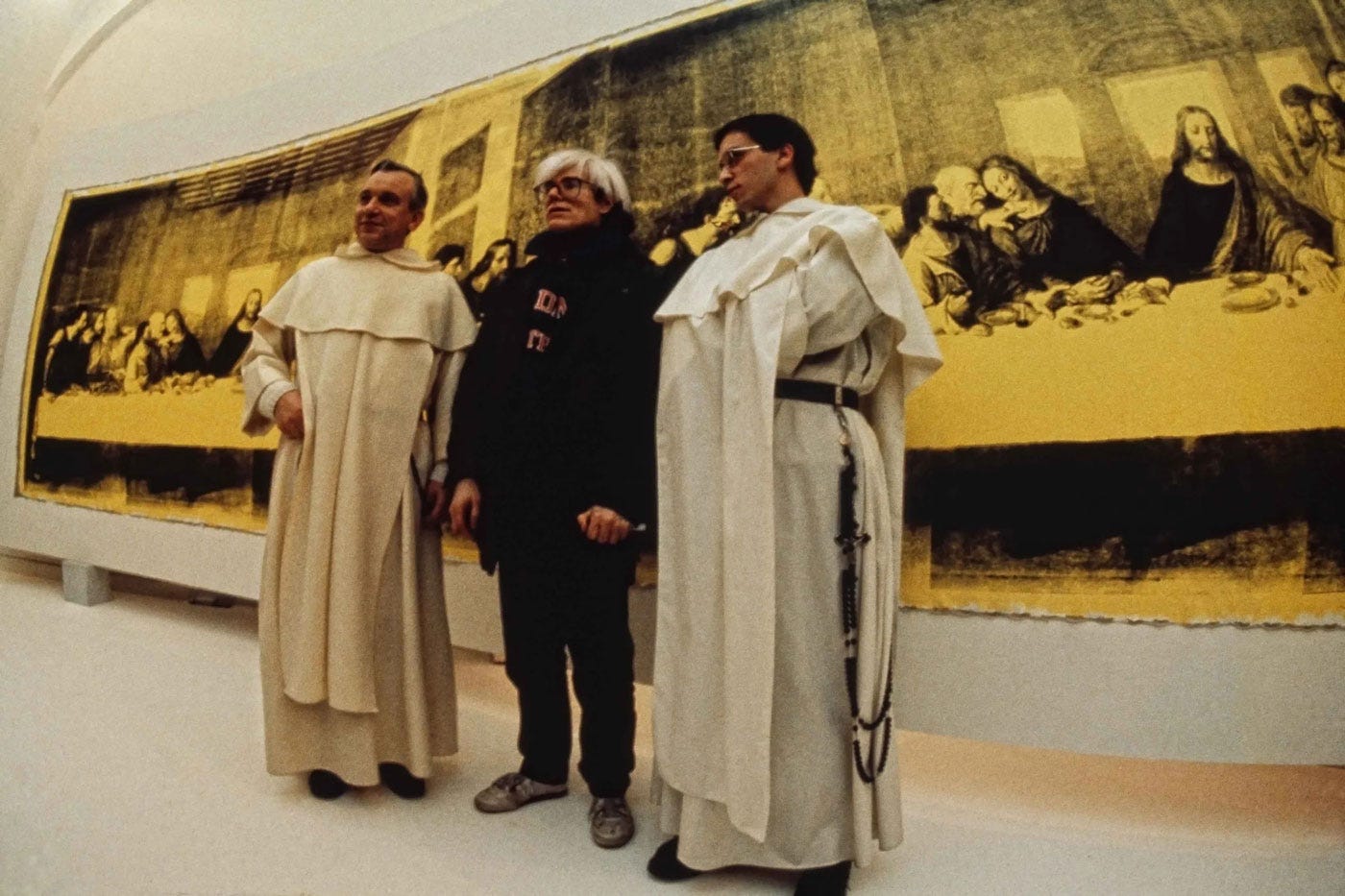
Almost five hundred years after Leonardo painted his Last Supper, another great artist, Andy Warhol, exhibited his homage to Leonardo da Vinci a few meters away.
Dear reader, can you think of any other artist who has influenced other artists for five centuries? What about Michelangelo?
Michelangelo's Jimi Hendrix Effect as a sculptor, painter, and architect
In a previous story, "The Artistic Fight of the Century," we discussed the titanic clash that occurred when Leonardo and Michelangelo painted in the same room, at the same time.
Leonardo left the stage for France, and Michelangelo hovered like the sun during an eclipse: he shone brightly while the world was in his shadow. That is not an overstatement, as the effect is quantifiable.
Michelangelo's style is to carve or paint muscular, elongated, and dynamically twisted figures. He used a strong color contrast effect in painting to produce volume, as if sculpting color, resulting in a silk-like sheen.
Nearly fifty years after Michelangelo's death, the masterpiece above shows the Jimi Hendrix Effect: elongated, muscular bodies, intense colors, evidence of Michelangelo's influence. This painting by El Greco also inspired Pablo Picasso, so the torch was passed from Michelangelo to Picasso via El Greco...
In sculpture, the thunderbolt line between Michelangelo and Rodin is easy to see, in the contrast between unfinished and finished, and in Michelangelo's Thinker and Rodin's Thinker (see the photo on top).
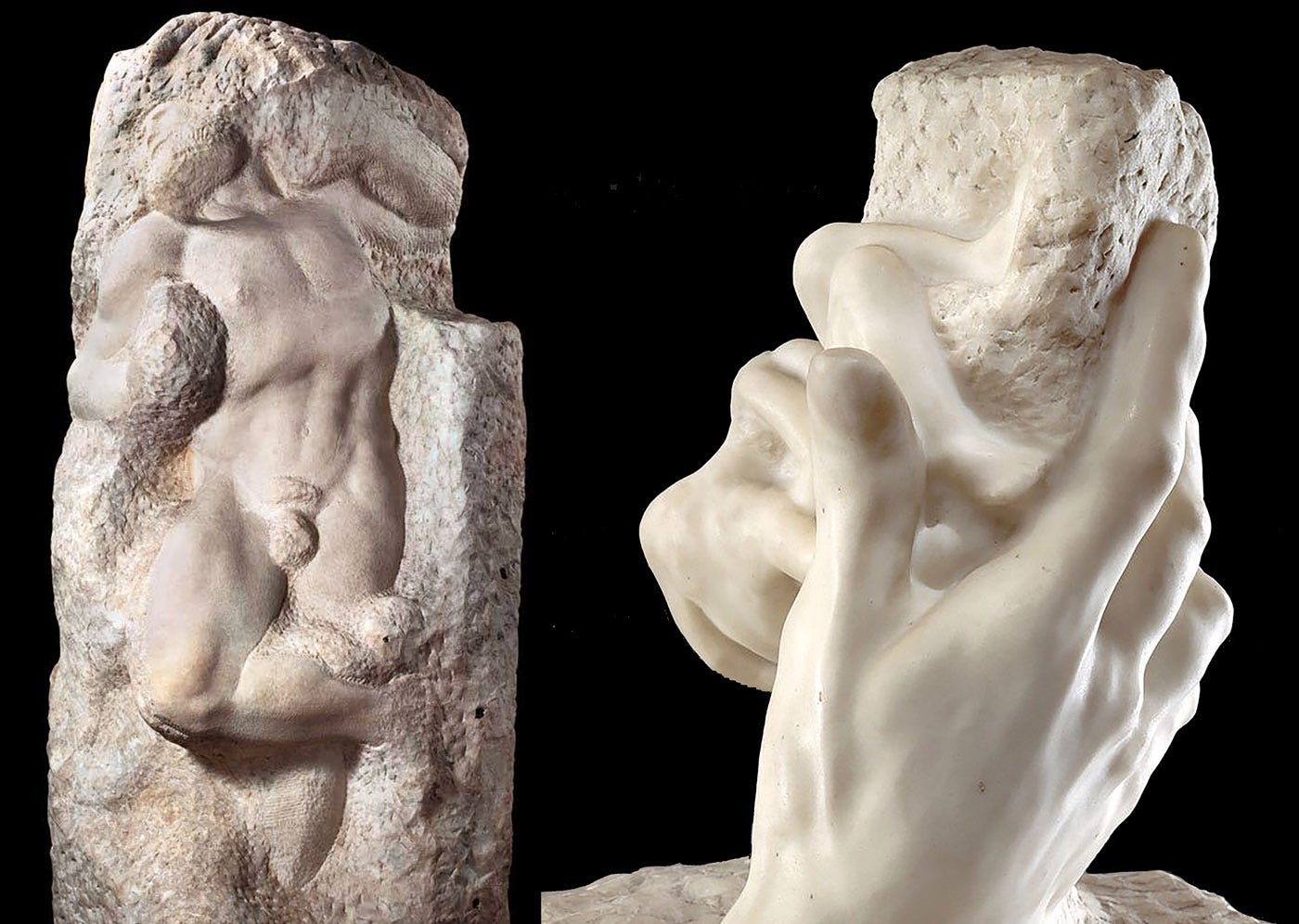
At age 70, Michelangelo was forced, against his will, to take on the project of completing the dome of the Vatican. He worked on it until his death, at age 88.
If you notice a slight resemblance between Michelangelo's dome at the Vatican and the skylines of Rome, London, Washington, and many other cities worldwide, it is probably due to the Jimi Hendrix Effect.
Dear reader, I trust the link between Jimi Hendrix and Michelangelo makes sense. But what about ancient Greece and interstellar space? Hold on tight.
Phidias, Polykleitos, and Praxiteles, the most influential sculptors of all time
Rodin advises young sculptors to “Bow before Phidias and Michelangelo.” Who is this Phidias that Rodin asks us to revere?
Dear reader, you are forgiven for being puzzled and wondering if you've ever seen a Phidias statue. You haven't, as, sorry to have to tell you, all the masterpieces of the great Classical Greek sculptors have been destroyed.
There is no bronze or marble from Phidias, Praxiteles, Polykleitos, and the other great sculptors of classical Greek art that survived the tragic loss of knowledge and art at the end of Antiquity.
Everything we know about these artists came from writers and the many copies the Romans made.
Phidias oversaw the design of the Parthenon marbles, but did not carve them, as he was busy with something far more important. Below, you can see an accurate reconstitution of what he was up to.
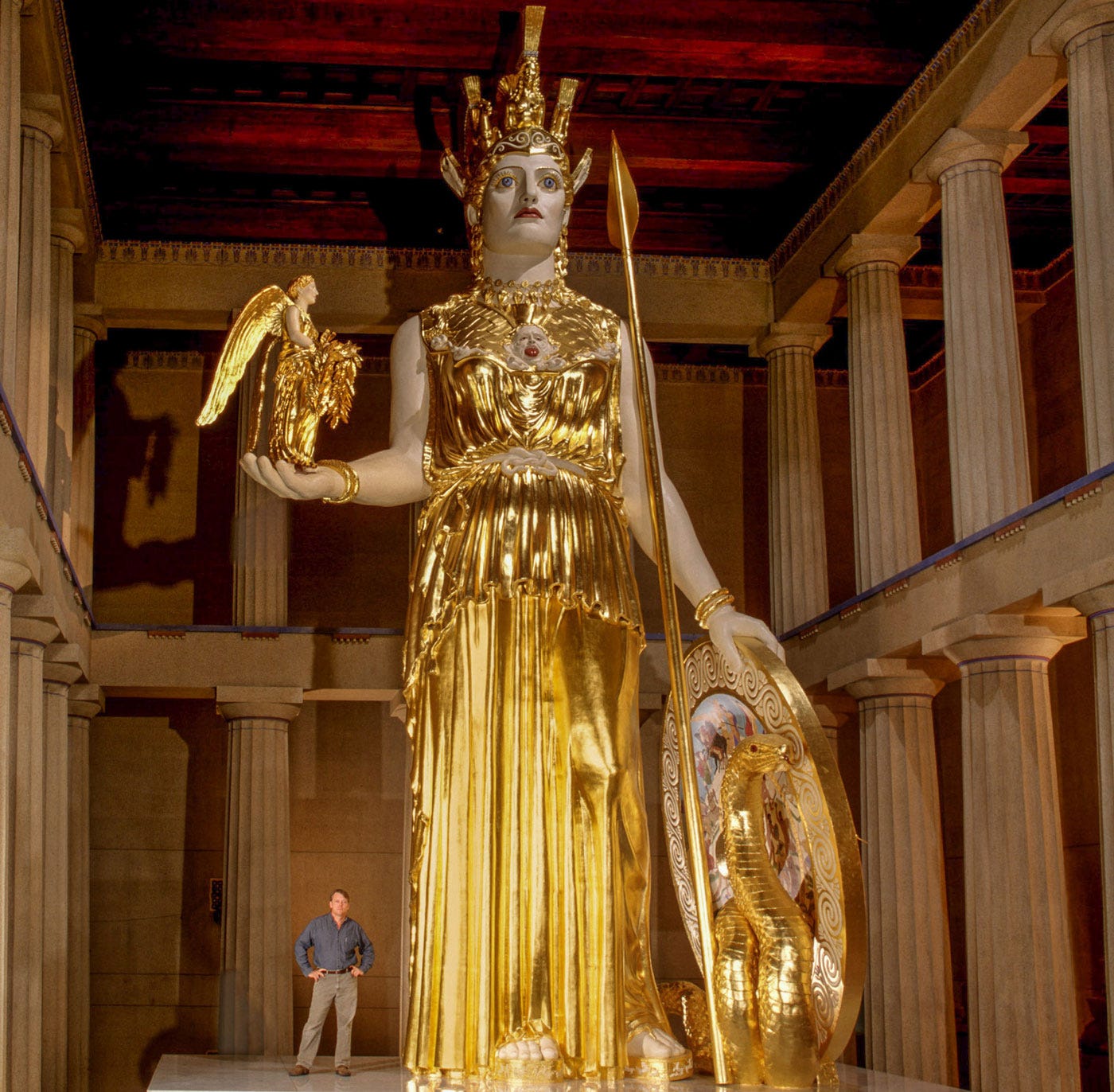
The statue of Athena, 40 feet high, was made of one ton of gold and elephant ivory. Helpfully, the sculptor who created the replica is standing next to it to help us understand the scale of the original. All we have from Phidias are what authors tell us:
An almost innumerable multitude of artists have been rendered famous by statues and figures of smaller size; but before them all stands the Athenian Phidias, celebrated for the Statue of Olympian Zeus, which in fact was made of ivory and gold.
Before all stands Phidias, in plain English, he was the greatest Greek sculptor of all.
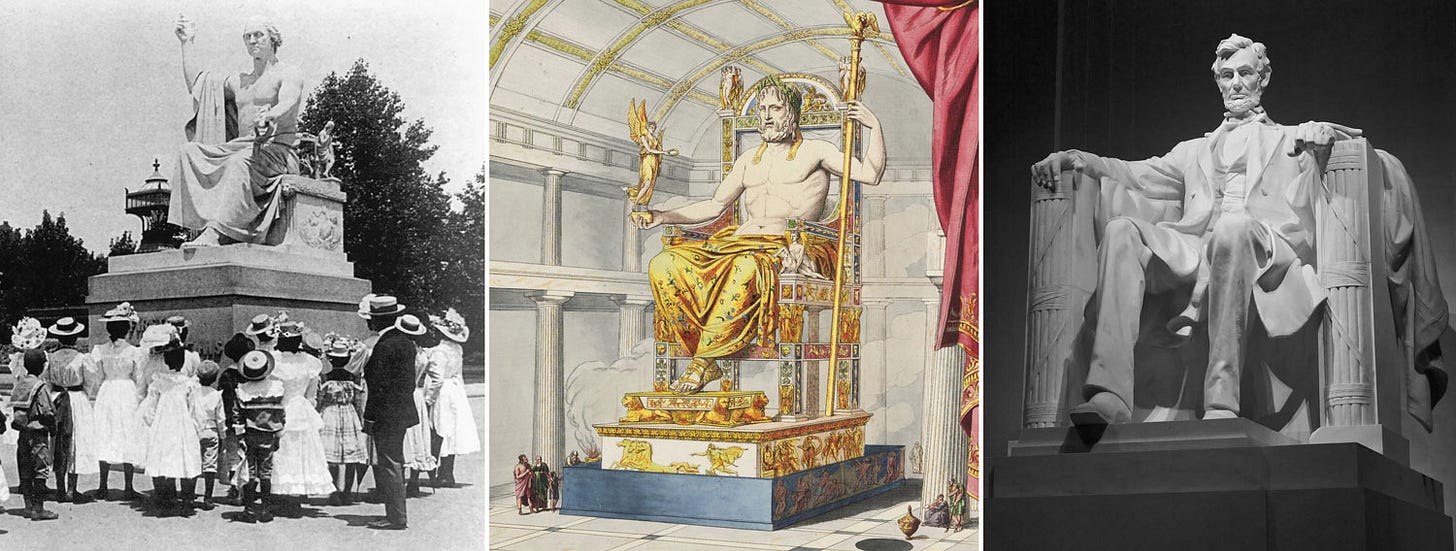
Phidias' influence extends from Greece to Rome and then to Washington. Phidias and the other Greek masters influenced the Statue of Liberty and all figures of Justice in courts worldwide. While he was the great master of statues of the gods, what about us, mere humans?
Polykleitos, a small step for man, a giant leap for mankind
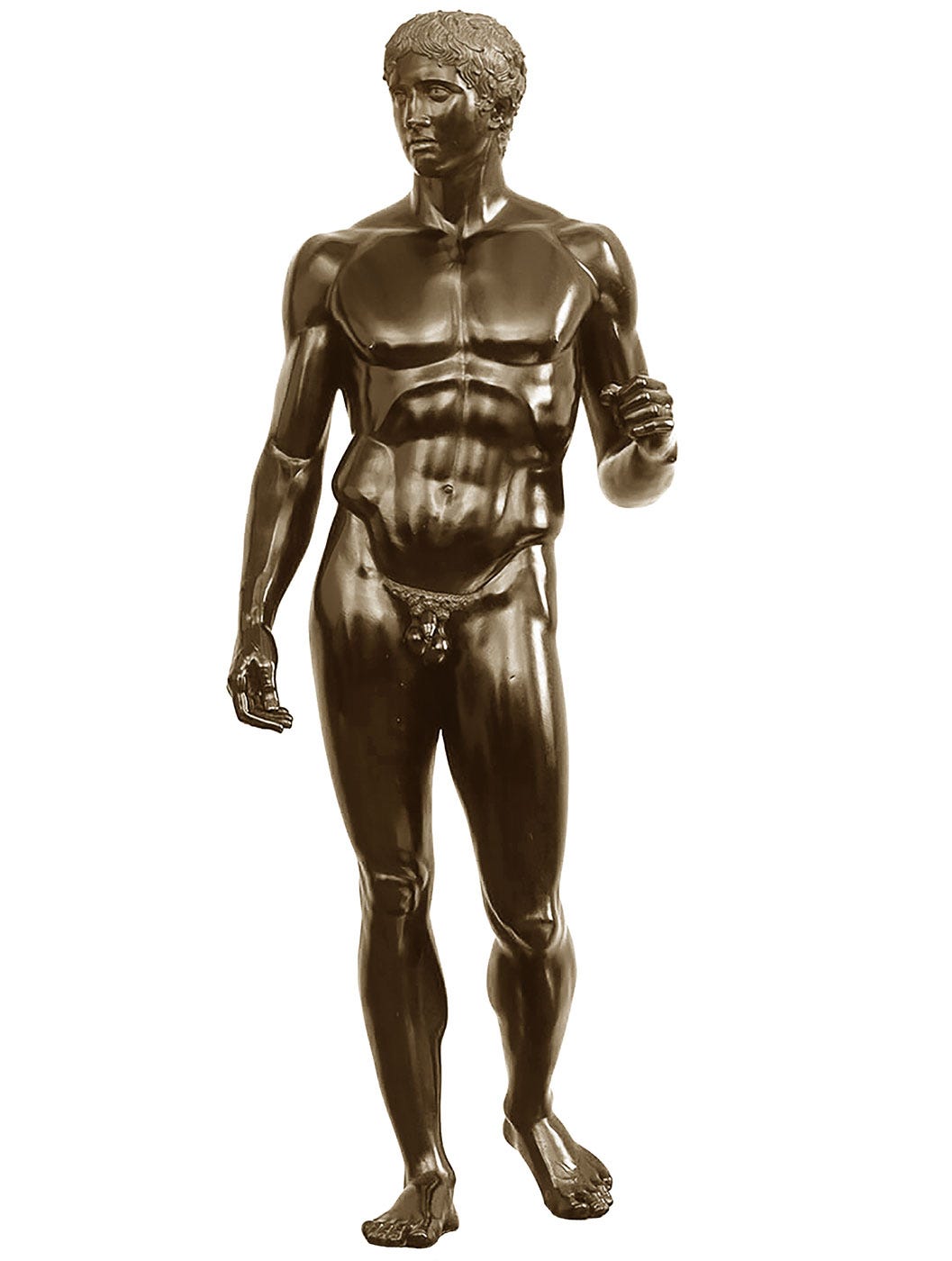
Polykleitos, with the small step for man, but giant leap for mankind, revolutionized the image of humans:
It was strictly his invention to throw his statues their weight on one leg.
The athlete is simultaneously resting and moving. He is both a thinker, in meditative contemplation, and a man of action, ready to use his spear on the invader or tyrant. He is the measure of all things, as visible in Vitruvius' architectural proportions drawn by Leonardo.
And what about women? Here comes Praxiteles
Dear reader, the distance between human and divine was so thin in the Greek world that gods and humans had children. When a human climbs on a pedestal, he or she is one step closer to the divine.
Goddesses were not represented nude until Praxiteles carved Aphrodite in marble. Here is the impact the original had on a witness:
In the excess of his admiration, he stood almost petrified, though his emotions showed in the melting tears trickling from his eyes.
Carl Sagan, NASA, and the Pioneer plaques
NASA considered sending a message to potential aliens when sending two probes, Pioneer 10 and 11, into interstellar space. A gilded aluminium plaque was to be attached to the probes.
To illustrate what we humans look like, Carl Sagan explained that:
The original drawings of this couple were made by my wife and were based upon the classical models of Greek sculpture and the drawings of Leonardo da Vinci.
The controversies about their nudity and the meaning of nude in art will be discussed in another story. When Sagan mentioned Greek models, he probably had Polykleitos, Phidias, and Praxiteles in mind. For the drawings of Leonardo da Vinci, it was likely the Vitruvian man.
Chuck Berry and Louis Armstrong joined Bach and Mozart on a ride into interstellar space on the Golden Record, on Voyager 1 and 2.
NASA casually described the probes' journeys:
Pioneer 10 is heading towards the star Aldebaran in the Taurus constellation and will take more than 2 million years to reach it.
Pioneer 11 will pass near one of the stars in the constellation of Sagittarius in about 4 million years.
Museums are about 200 years old, writing dates back over 5,000 years, and our species, homo sapiens, has been around 300,000 years. What would be left of us, our achievements and failures, in four million years?
Mozart and Louis Armstrong would still, somewhat, fill the universe's silent void. However unlikely it is that someone will look at the plaques, the Greek sculptors and Leonardo da Vinci's Jimi Hendrix Effect will still grace frozen darkness for millions of years and over billions of miles.
If the plaques' gilding suffers erosion, being made of aluminium, they will still reflect the light of dim stars and project Sagan's homage to the Greeks and Leonardo.
In other words, the Pioneer plaques and the Voyager Golden Records will likely be humanity's last words. Hence, Phidias, Polykleitos, Praxiteles, and Leonardo da Vinci will end up being humanity's most influential artists.
Quite the Jimi Hendrix Effect.
Dear reader, I usually try to transport you into the past. Here we find ourselves traveling as far as interstellar space, so I trust this little ride was a Moment of Wonder.
Sources
The Jimi Hendrix Experience plays a private showcase at the Scotch Of St James Club
Giorgio Vasari, Lives of the Most Eminent Painters, Sculptors and Architects.
Copies of the Last Supper by Leonardo da Vinci.
https://science.nasa.gov/resource/pioneer-plaque/
Pliny the Elder, The Natural History
LUCIAN, Affairs of the Heart (Amores)
Carl Sagan's Cosmic Connection: An Extraterrestrial Perspective
Greek miracle broken, melted & recycled; The near complete destruction of classical Greek statuary.






